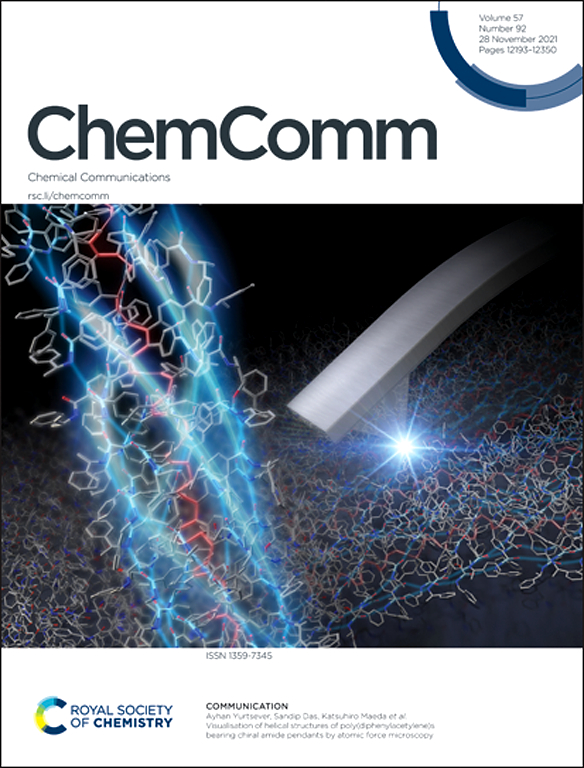Molecular engineering of functional DNA molecules toward point-of-care diagnostic devices
IF 4.3
2区 化学
Q2 CHEMISTRY, MULTIDISCIPLINARY
引用次数: 0
Abstract
The pursuit of rapid, sensitive, and specific diagnostic methodologies is imperative across diverse applications, including the detection of pathogens and disease biomarkers, food safety testing and environmental monitoring. Point-of-care testing (POCT) is characterized by its portability, ease of use, rapidity, and affordability, emerging as an attractive alternative for traditional diagnostics. Over recent years, the incorporation of functional DNA (fDNA) into POC diagnostic devices has emerged as a groundbreaking advancement, significantly enhancing sensitivity, specificity, and user-friendliness. In this review, we explore the innovative applications of fDNA in POC devices, highlighting its potential to revolutionize diagnostics by providing rapid, portable, and precise solutions. We discuss the unique advantages of fDNA, including its stability in complex biological matrices and its ability to recognize a wide range of targets. Furthermore, we explore the potential synergy between fDNA and cutting-edge technologies, such as nanotechnology and artificial intelligence (AI), to forge a path toward more personalized and accessible healthcare solutions. Despite significant progress, challenges remain in translating these innovations from the bench to the clinic. This review aims to provide a comprehensive overview of the current status of fDNA-based POCT devices and future directions for their development, emphasizing their critical role in meeting the global demand for accessible, efficient, and precise diagnostic solutions.

面向即时诊断设备的功能性DNA分子的分子工程。
追求快速、敏感和特定的诊断方法是各种应用的必要条件,包括病原体和疾病生物标志物的检测、食品安全测试和环境监测。即时检测(POCT)的特点是便携性、易用性、快速和可负担性,成为传统诊断的一种有吸引力的替代方法。近年来,将功能性DNA (fDNA)纳入POC诊断设备已成为一项突破性的进展,显著提高了灵敏度、特异性和用户友好性。在这篇综述中,我们探讨了fDNA在POC设备中的创新应用,强调了它通过提供快速、便携和精确的解决方案来彻底改变诊断的潜力。我们讨论了fDNA的独特优势,包括它在复杂生物基质中的稳定性和它识别广泛靶标的能力。此外,我们还探讨了dna与纳米技术和人工智能(AI)等尖端技术之间的潜在协同作用,以开辟一条通往更个性化和更容易获得的医疗保健解决方案的道路。尽管取得了重大进展,但在将这些创新从实验室转化为临床方面仍然存在挑战。本文旨在全面概述基于dna的POCT设备的现状和未来发展方向,强调其在满足全球对可获取、高效和精确诊断解决方案的需求方面的关键作用。
本文章由计算机程序翻译,如有差异,请以英文原文为准。
求助全文
约1分钟内获得全文
求助全文
来源期刊

Chemical Communications
化学-化学综合
CiteScore
8.60
自引率
4.10%
发文量
2705
审稿时长
1.4 months
期刊介绍:
ChemComm (Chemical Communications) is renowned as the fastest publisher of articles providing information on new avenues of research, drawn from all the world''s major areas of chemical research.
 求助内容:
求助内容: 应助结果提醒方式:
应助结果提醒方式:


